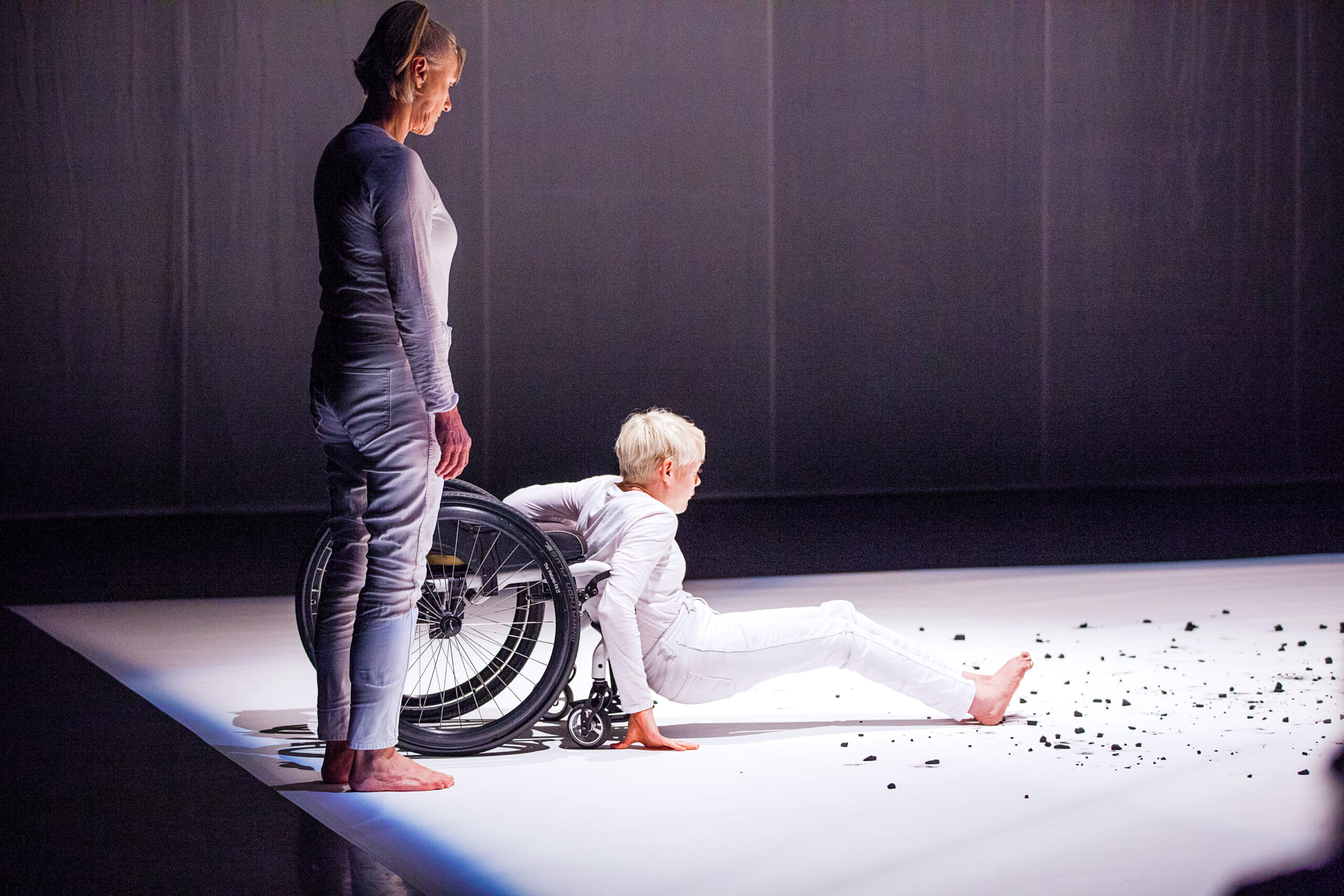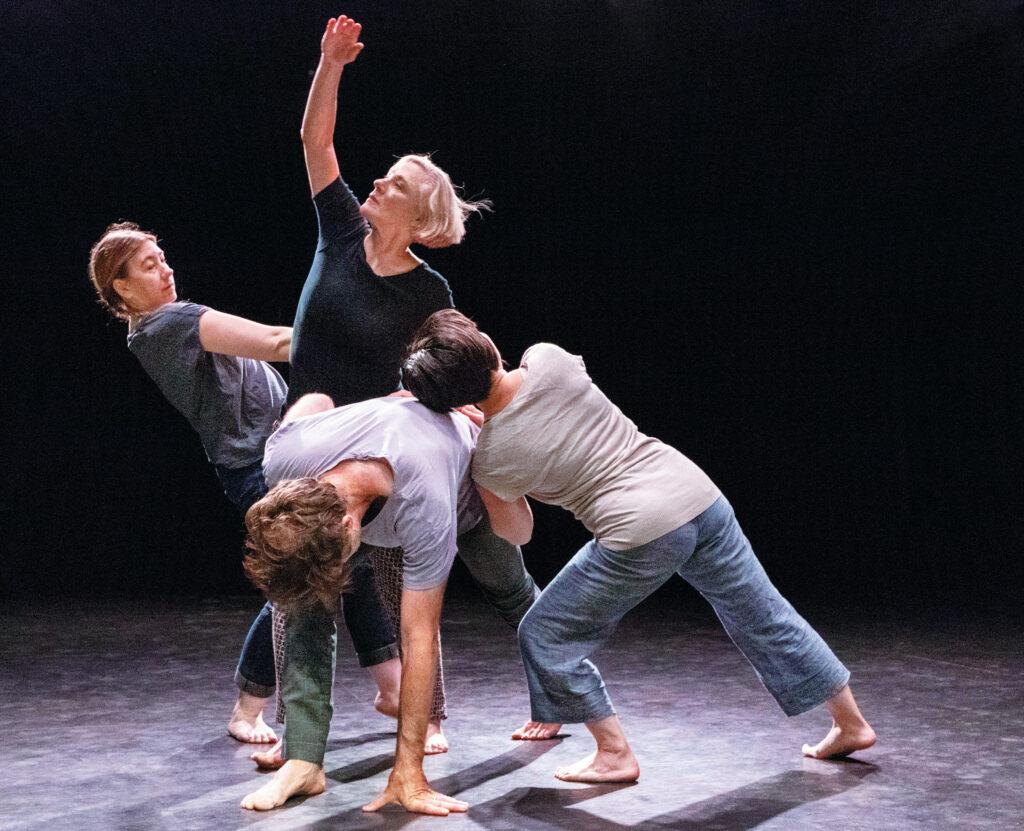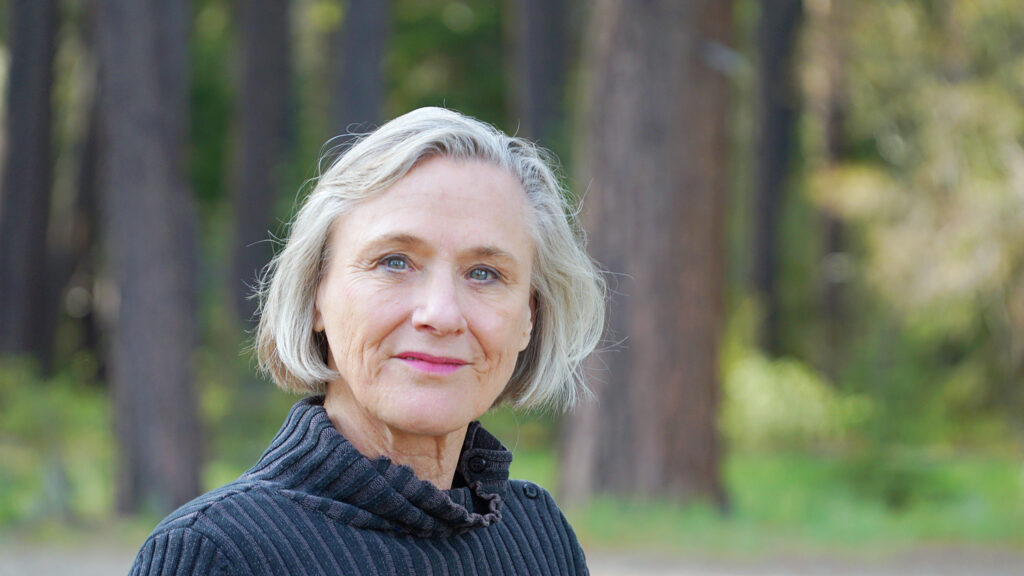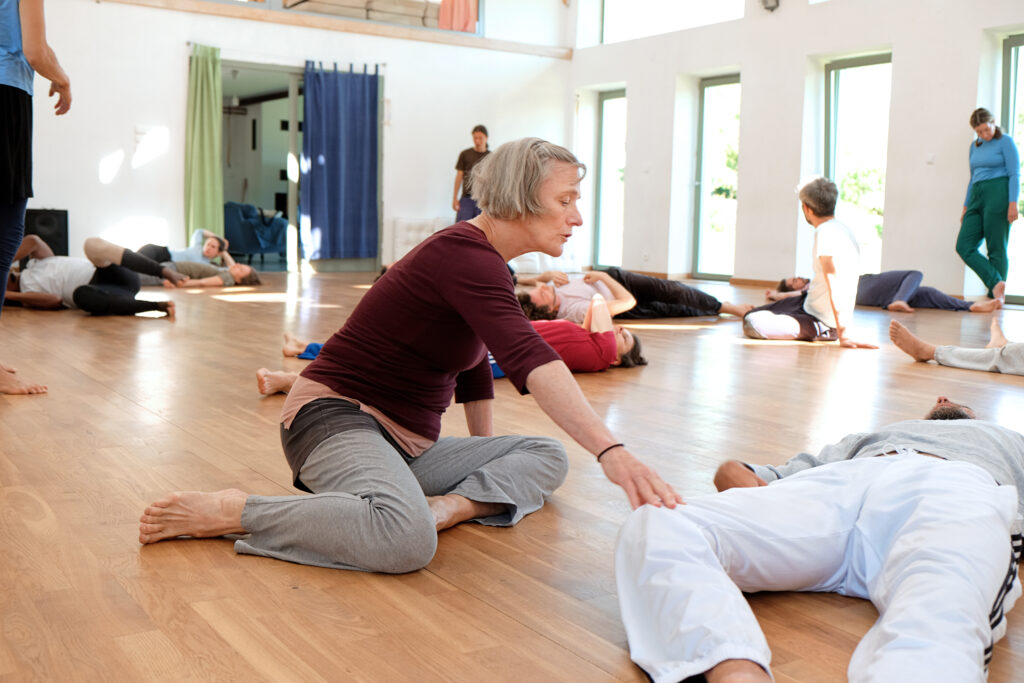
Nina Martin has always been on a mission to get out of her own way and into the underlying well of motion not dictated by habit and training. Her obsession with the preconscious state drives her dancing, research and teaching. “What is that state? How do we live in it?” asks Martin, a professor at Texas Christian University. “How we free ourselves from habitual choreography has always fascinated me.”
To that goal, Martin created ReWire, which she describes as “a somatic dance practice that strives to access preconscious movement states through a body–brain approach which embodies kinetic and neuronal stages to form a creative and therapeutic dance practice for dancemaking and movement disorders.” It’s what she has been pointing towards her entire dancing life.

Martin, considered a leading practitioner and educator in improvised choreography, developed her ideas working in New York City in the 1970s and ’80s with dancing somatic pioneers such as Nancy Topf, Elaine Summers, Mary Overlie and Steve Paxton, to name a few. She went on to co-found the groundbreaking improvisational collective Channel Z, as well as Ensemble Thinking, a system of collaborative group performance practices now used widely in improvisational performance and education. After leaving New York for the West Coast in the ’90s, she co-founded the improvisation collective Lower Left. She relocated to Texas, joining the faculty at TCU in 2008, and completed her PhD in Dance at Texas Woman’s University in 2013.
“ReWire evolved in the mid-1980s as a solo body investigation into preconscious movement states,” says Martin. The technique involves a deep dive into improvising without deliberation and at a speed where that isn’t even possible. For instance, there are many practices, referred to as “scores,” that comprise ReWire. One particularly potent score, named “Fussy Baby” by her students, involves the mover performing rapid and random movements on the floor. After a certain period of time the facilitator cues the participants to select one movement to repeat until exhaustion. The entire sequence is repeated several times during the course of the workshop.

The goal is to quiet the predictive aspect of one’s brain. “It’s stupidly simple, brilliantly simple,” says Martin. “Fussy Baby works because the short and random movements operate under the radar of the mind, which has little interest in this movement state. It seems this ‘mindless’ activity offers a calibration of the parasympathetic nervous system that supports repatterning and efficient movement patterns.”
When Silva Laukkanen, program director for Art Spark Dance in Austin, asked Martin to teach ReWire for the program that serves movers with and without disabilities in Austin, TX, she was reluctant and repeatedly declined the offer. She had not considered ReWire as a therapeutic process. “I didn’t know the language,” Martin recalls. She finally agreed to give ReWire a try. “I know that in cerebral palsy (CP) the body can be severely contracted, so I thought why not meet their chaos with my chaos.”
After that first workshop, Martin remembers asking one of the participants how she was feeling, and she replied, “I am all stretched out.” Some participants experienced a prolonged stillness free of spasticity and greater range of motion. “I was surprised. The results were dramatic,” says Martin. “It was evident that there was a phenomenon worth researching.”

In 2017, Martin offered a class with Dr. Eric Simanek to an invited group of TCU premed and dance majors called Dance and Cerebral Palsy. Its aim was to examine the impact of ReWire on people with CP participating in the Art Spark Dance workshops. In 2018, the results of the study were presented at Harvard Medical School during Movementis, an annual international conference focused on movement and cognition for medical professionals, research scientists and professionals—a milestone for dance and cognitive science. Martin adds, “This was the first time that any of these sophomore and junior students had ever been to a conference, and it made a huge impact on them and their future plans.”
After her success with the study, Martin returned to her classes even more convinced that ReWire can be a potent practice for anyone, including the highly trained dancers at TCU. “It was validation. I was ready to push a little harder in my classes at TCU, to be more persistent.” she says. “Dancers don’t want to move like this—it’s not beautiful or creative, and that can be unsettling. What’s fascinating to me is that we can see underlying inefficient movements.”
She did observe some profound changes in her students. “I did notice more maturity and autonomy,” she recalls. “This is a performance skill, to not know what’s next.”

Although Martin realizes ReWire may have something to offer other movement disorders, she also knows the best way to proceed will be to continue research with those living with CP. To that end Laukkanen and Martin are applying for grants from government and private foundations, including the Cerebral Palsy Foundation for a performative research project in the fall of 2024. At 70, she is also concerned about how to keep ReWire moving forward and is now considering a certification process.
“There is so much mimicry in dance,” says Martin. “As a preconscious practice, [ReWire] has so much value to the dancer. The body achieves a receptive state. With dancing that comes from trusting yourself, it is difficult to be present. But that’s what we love about dancing.”





